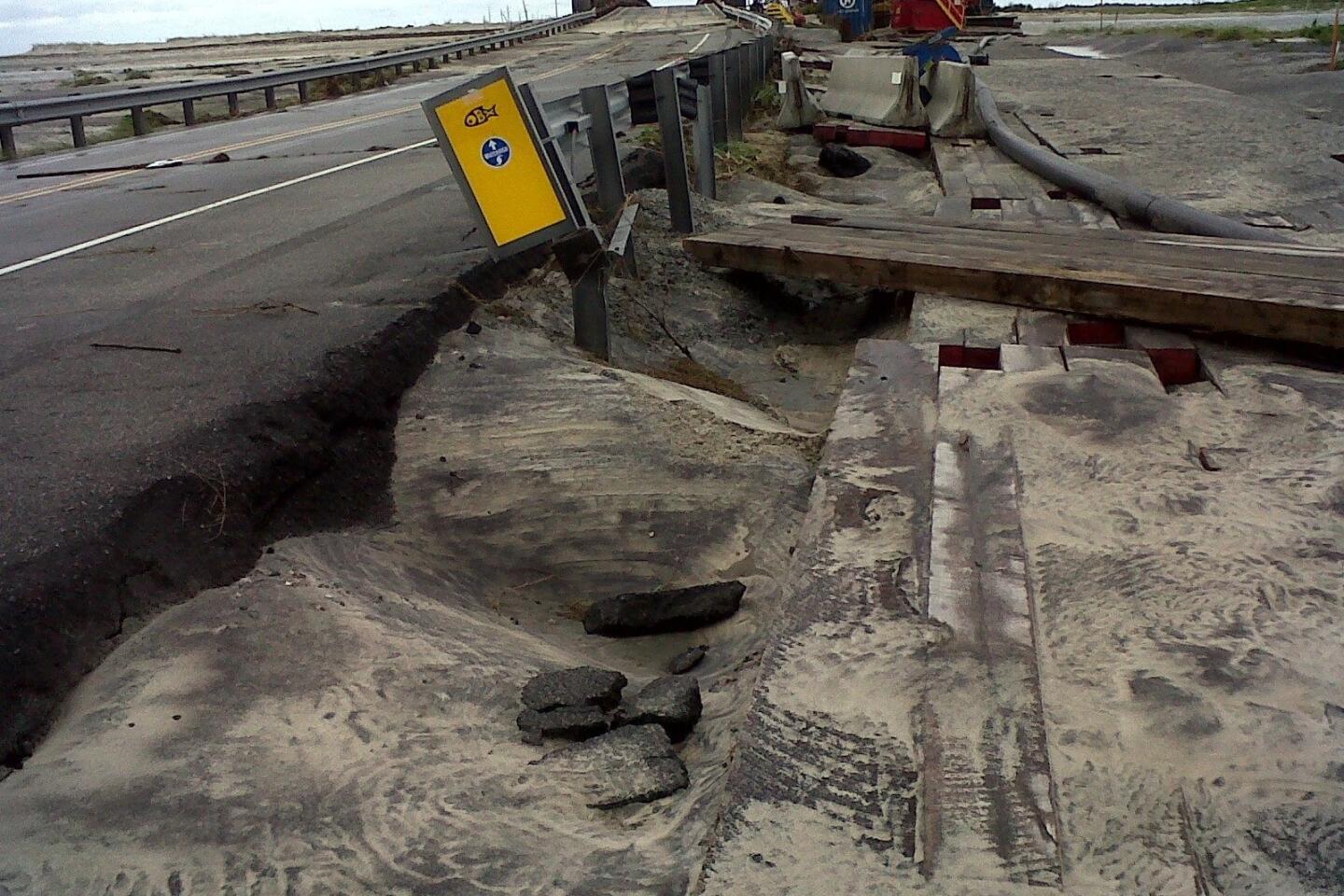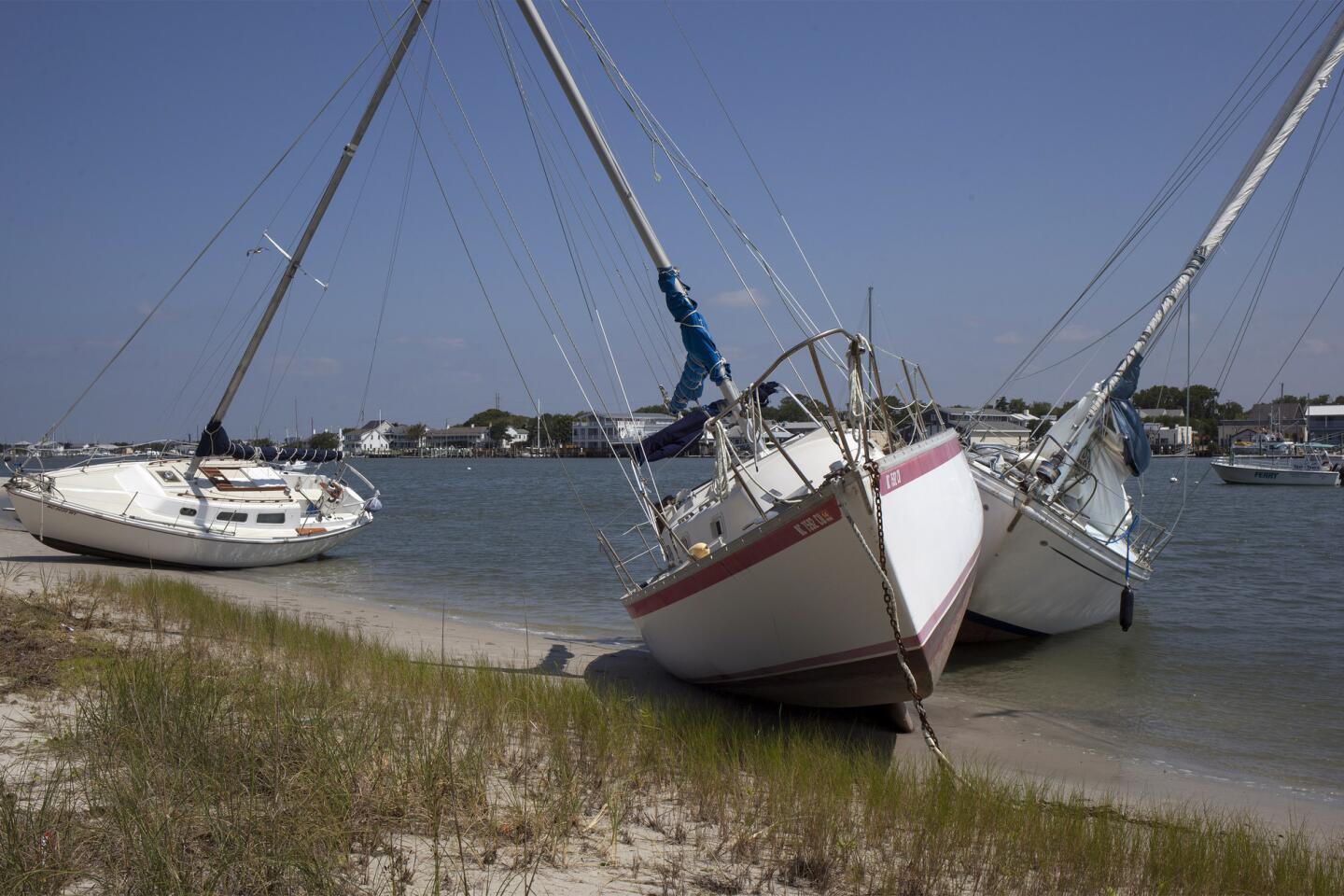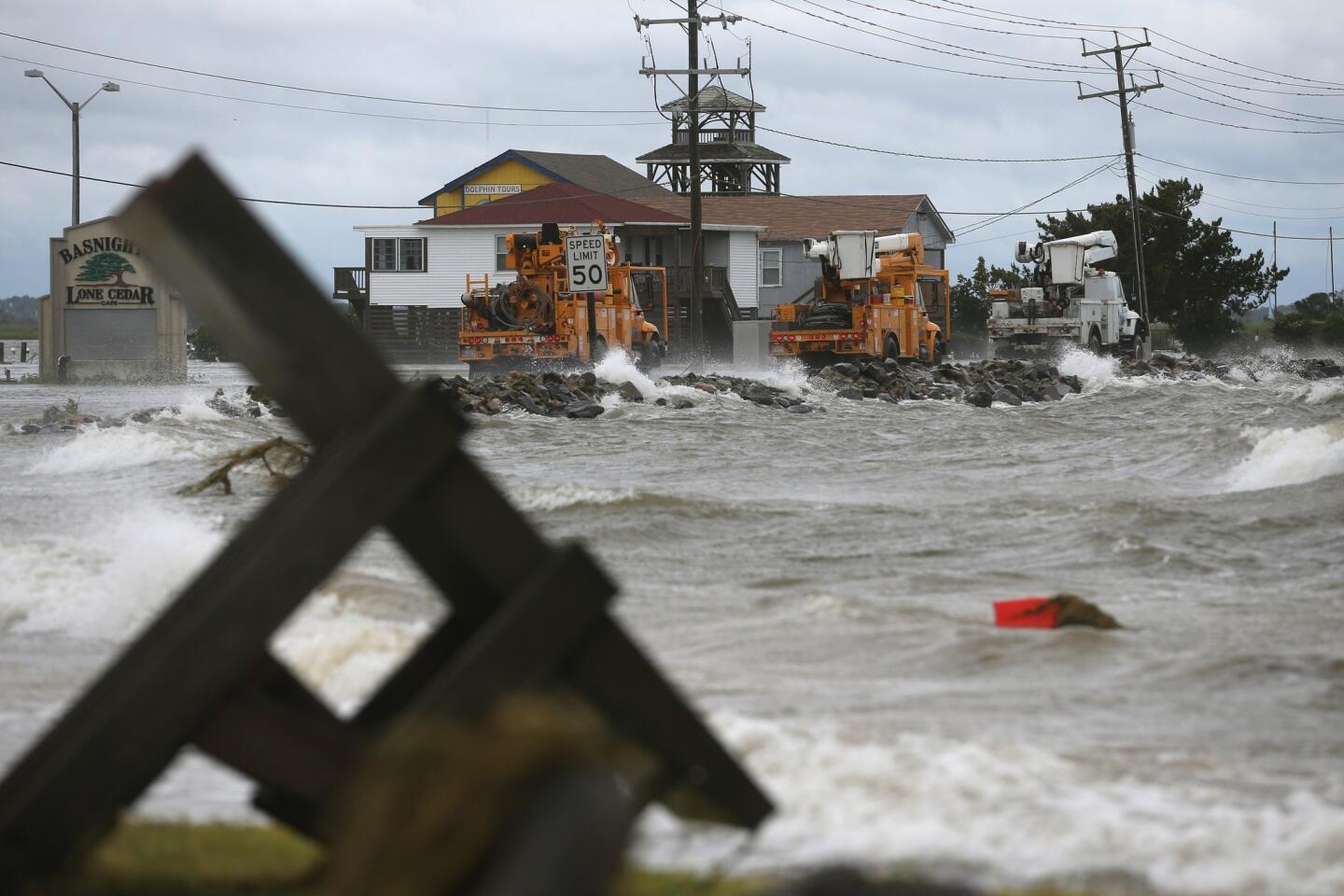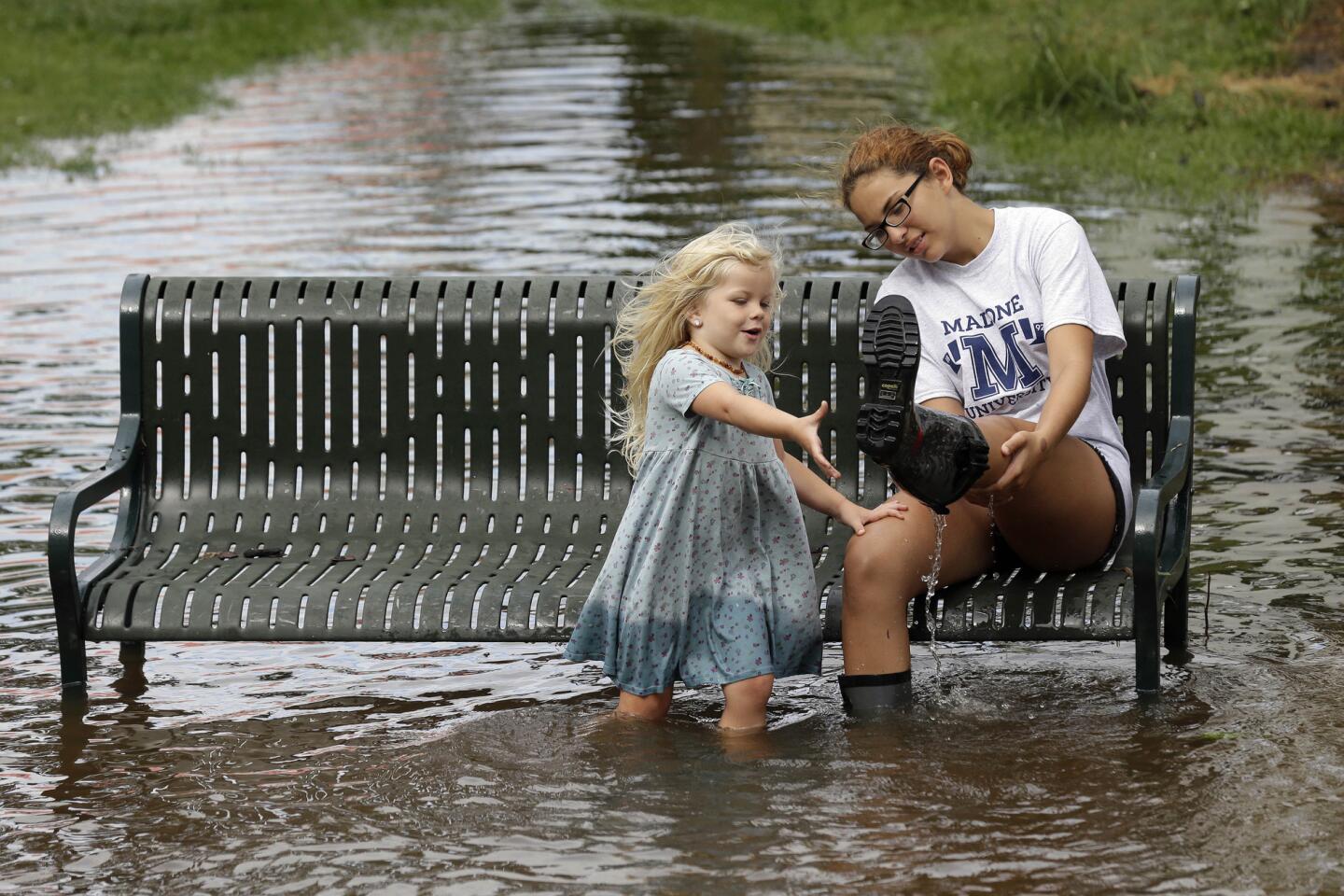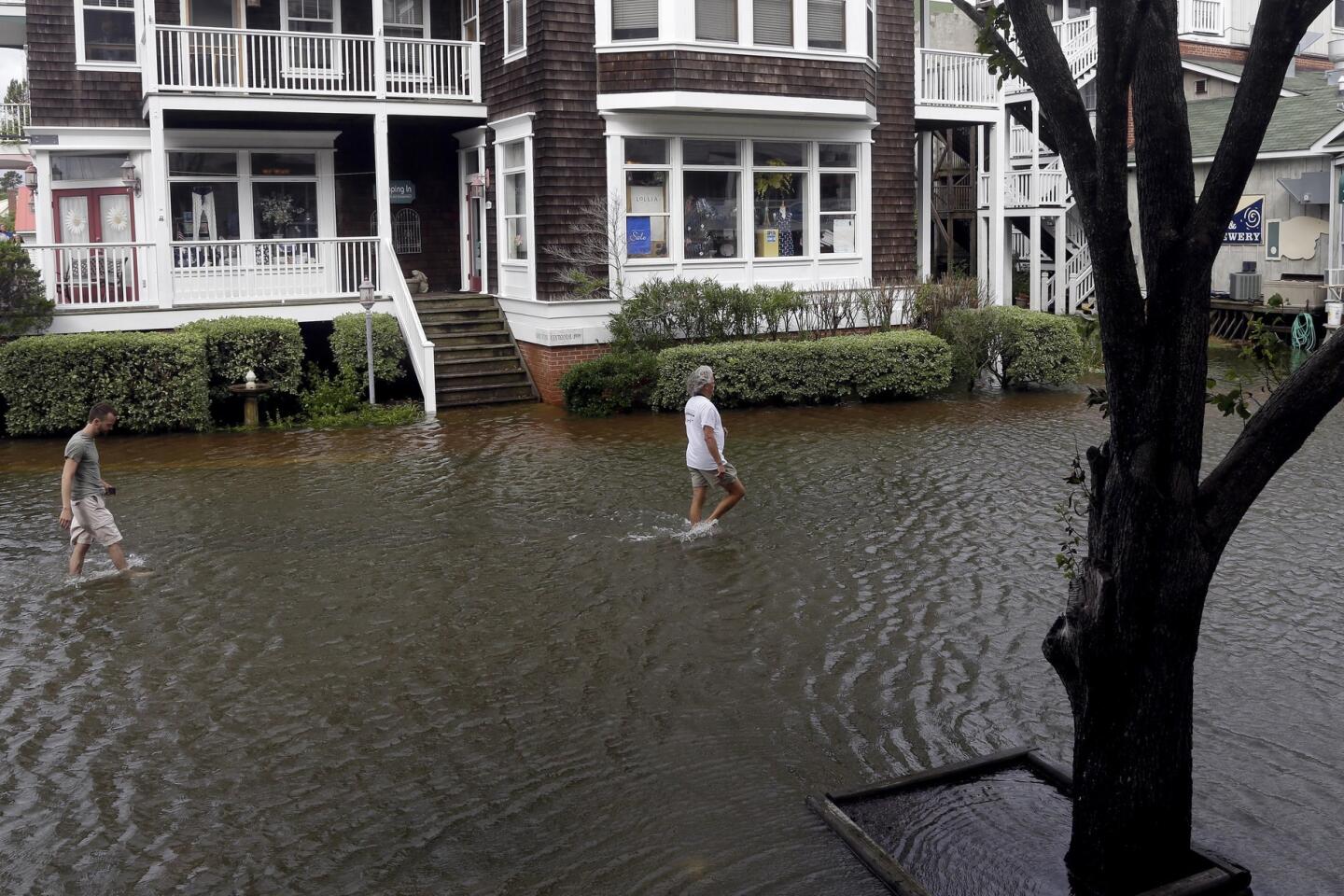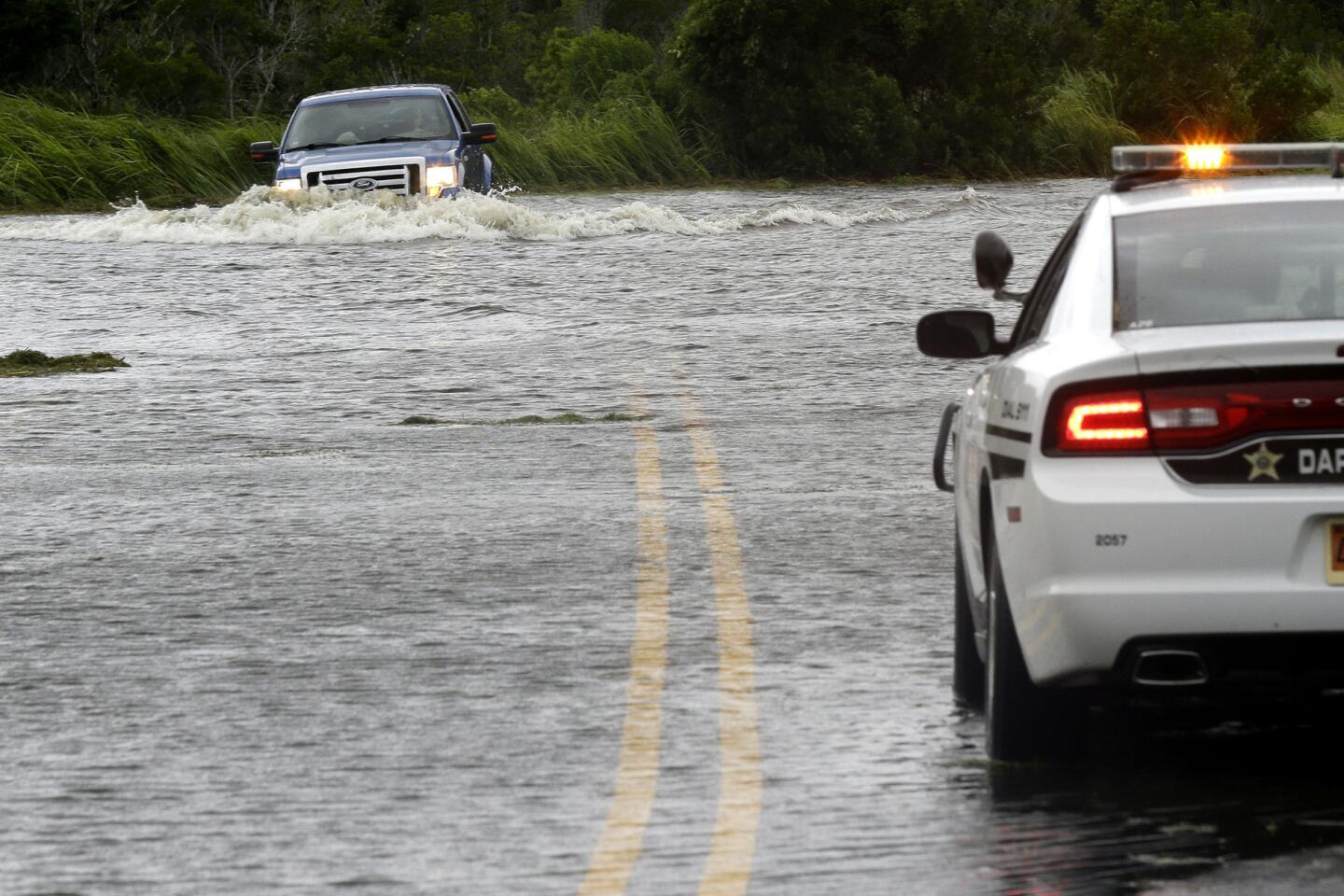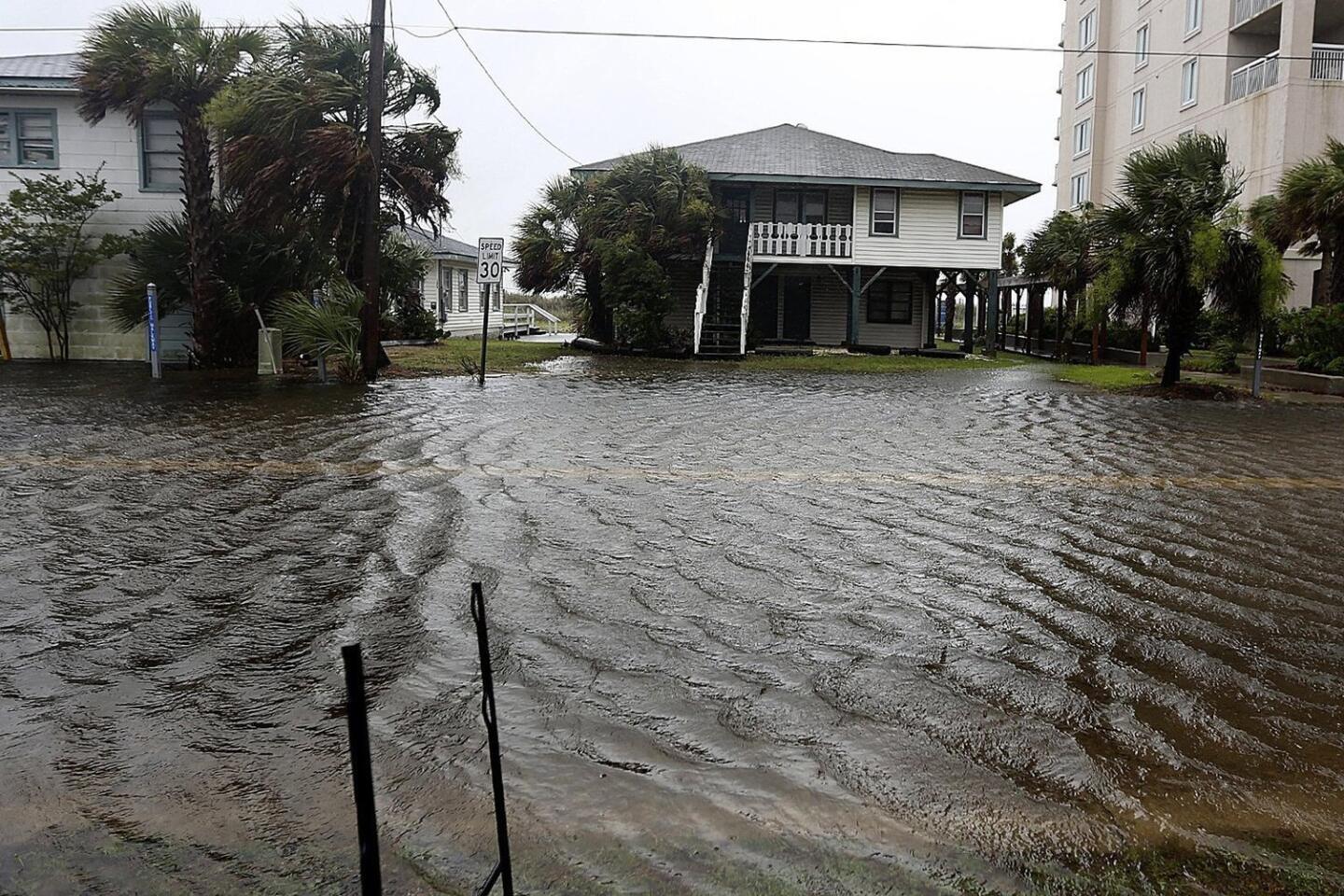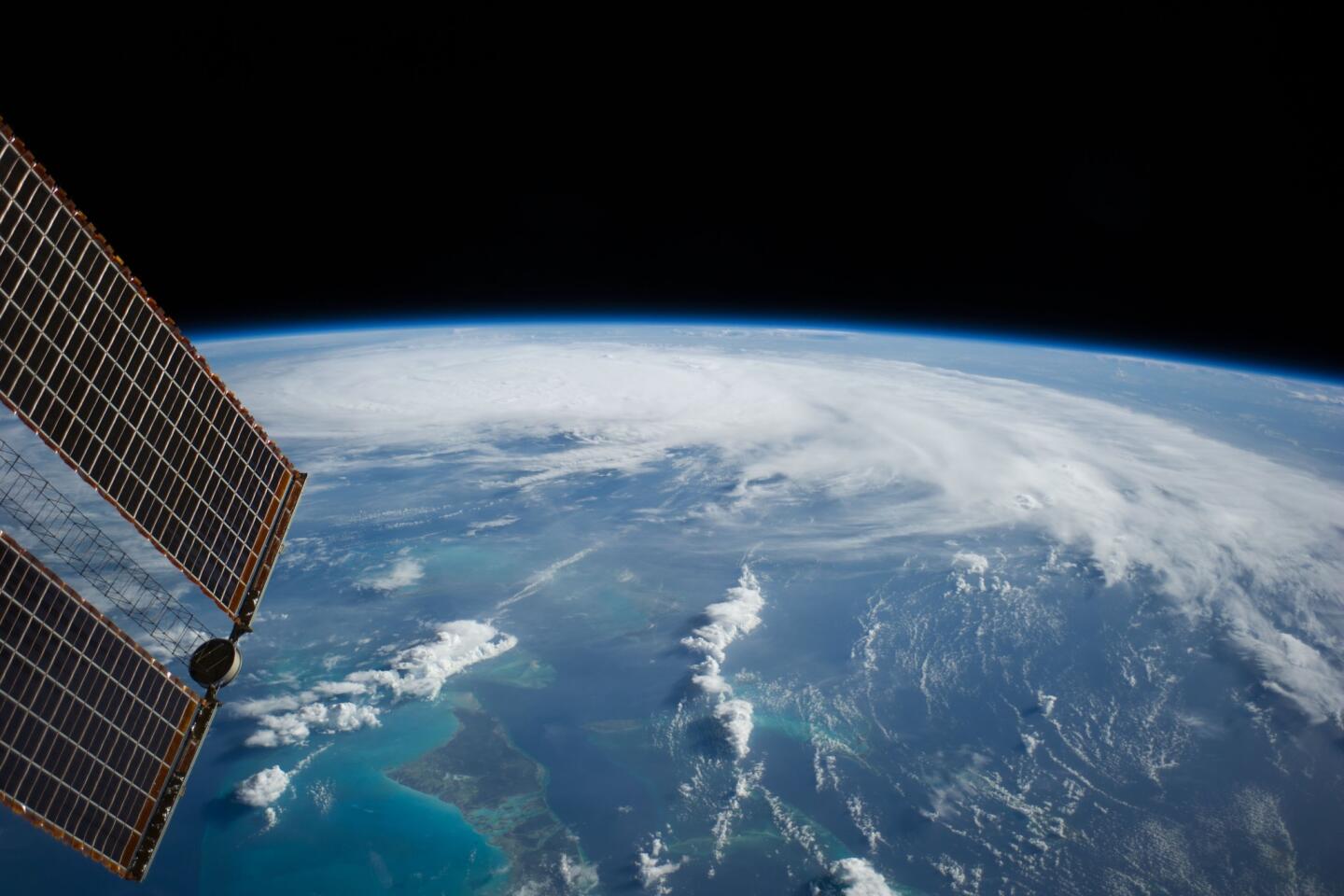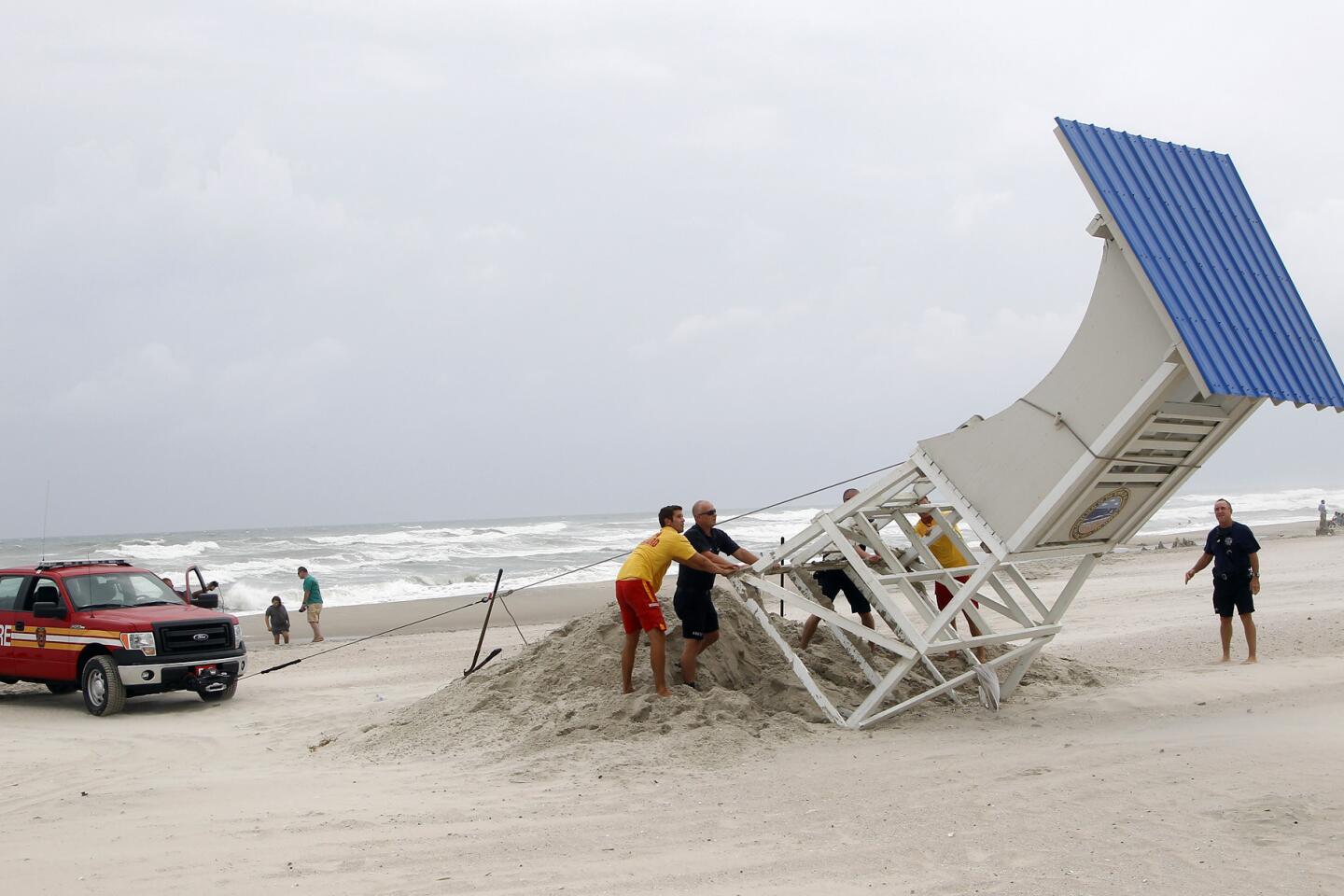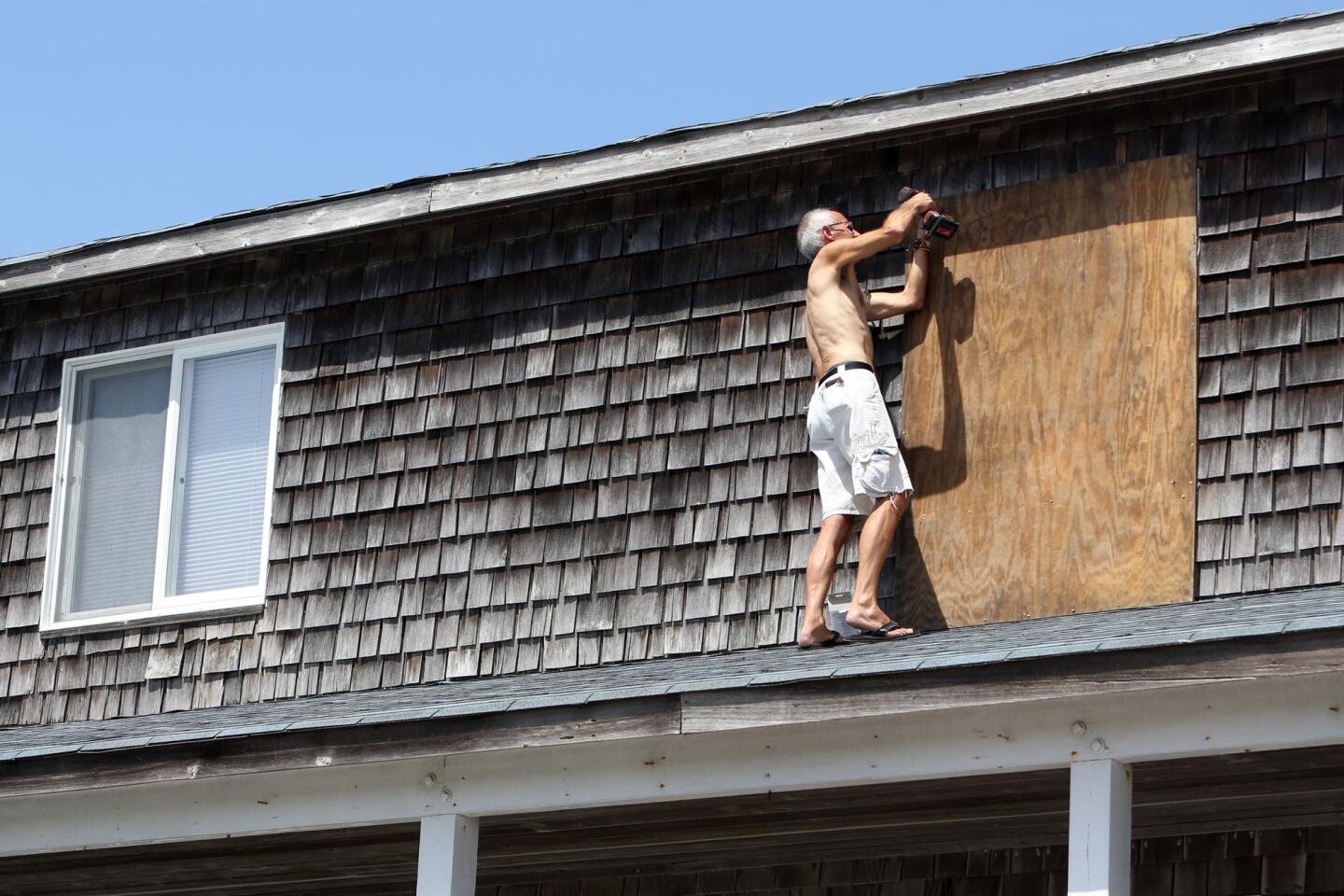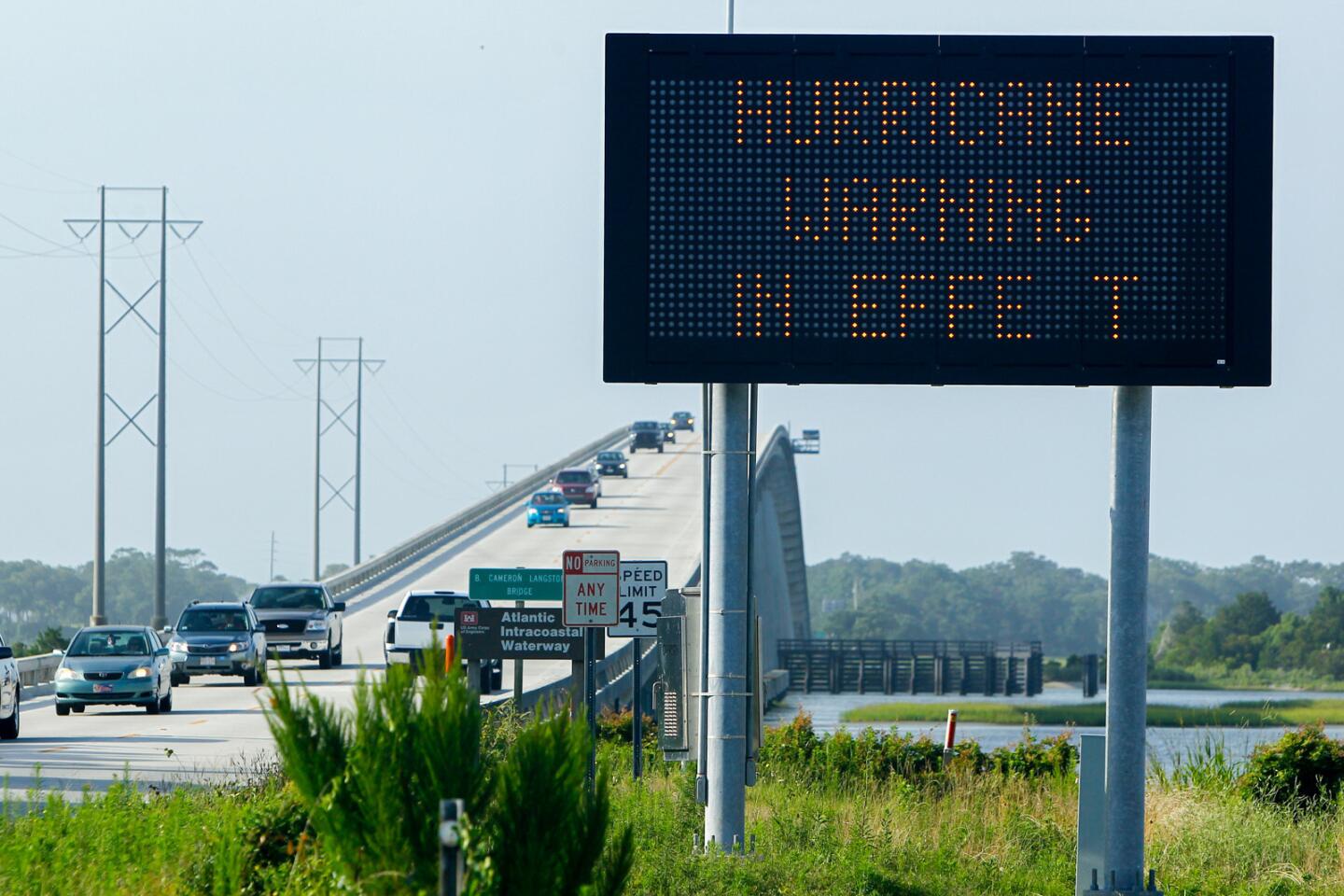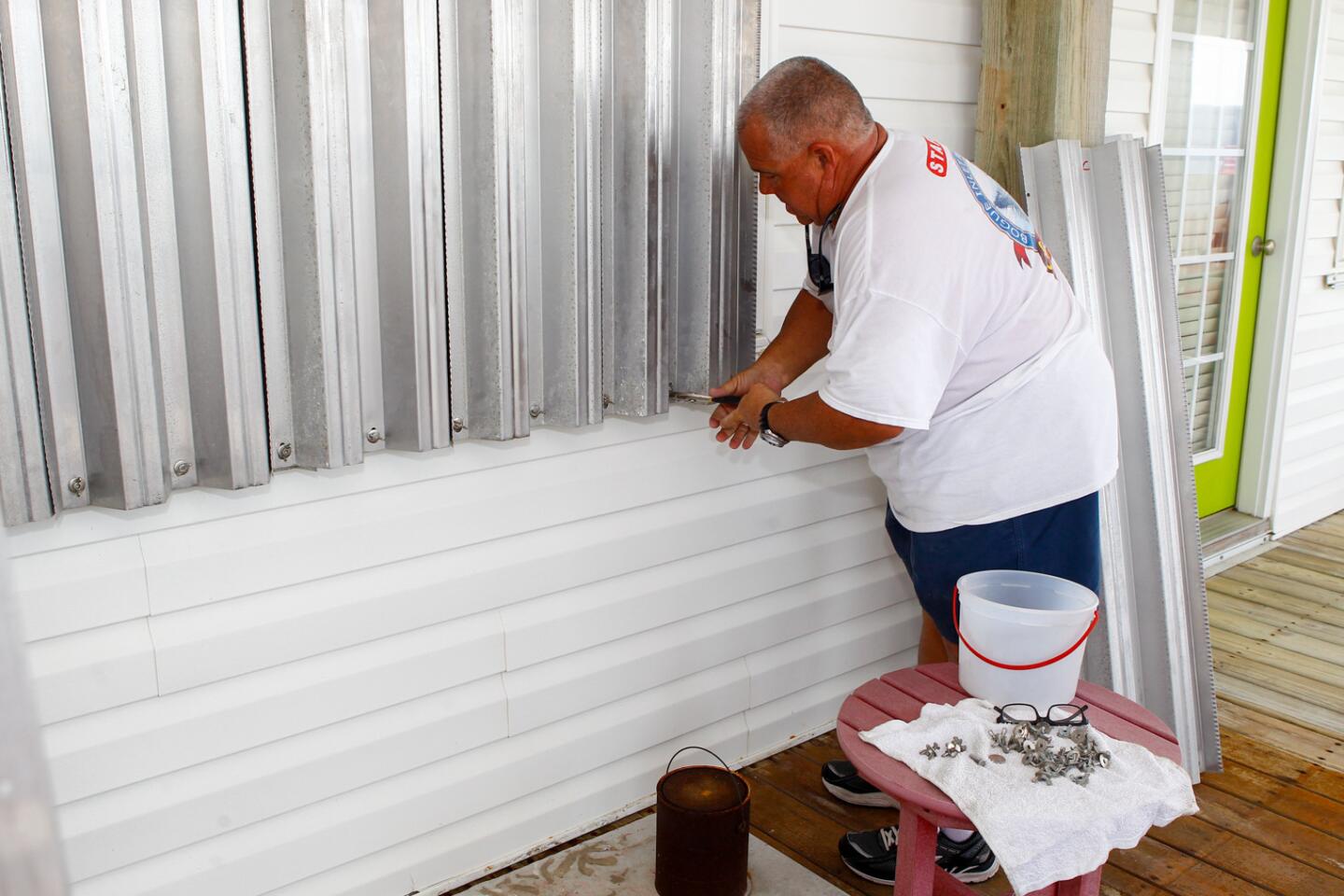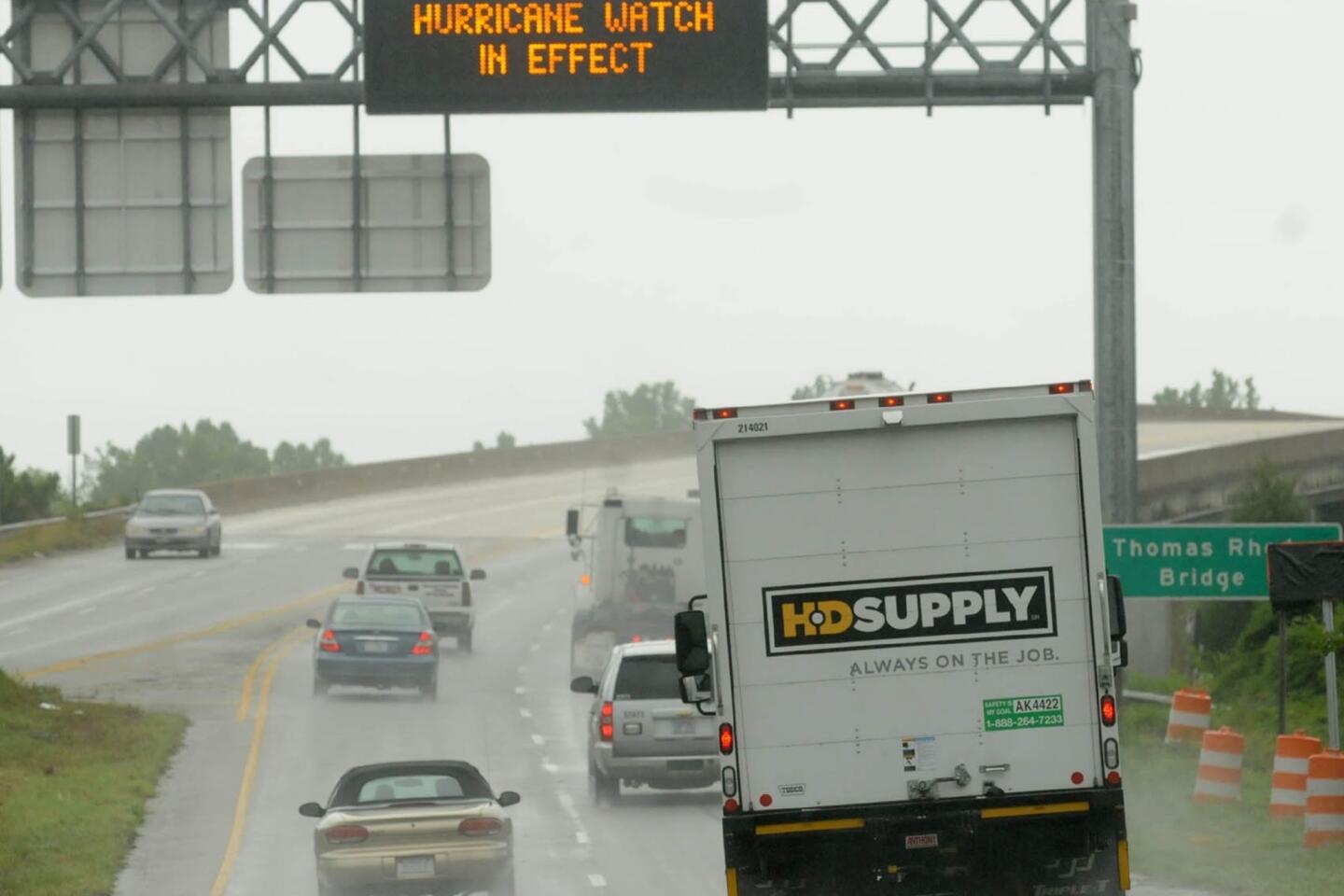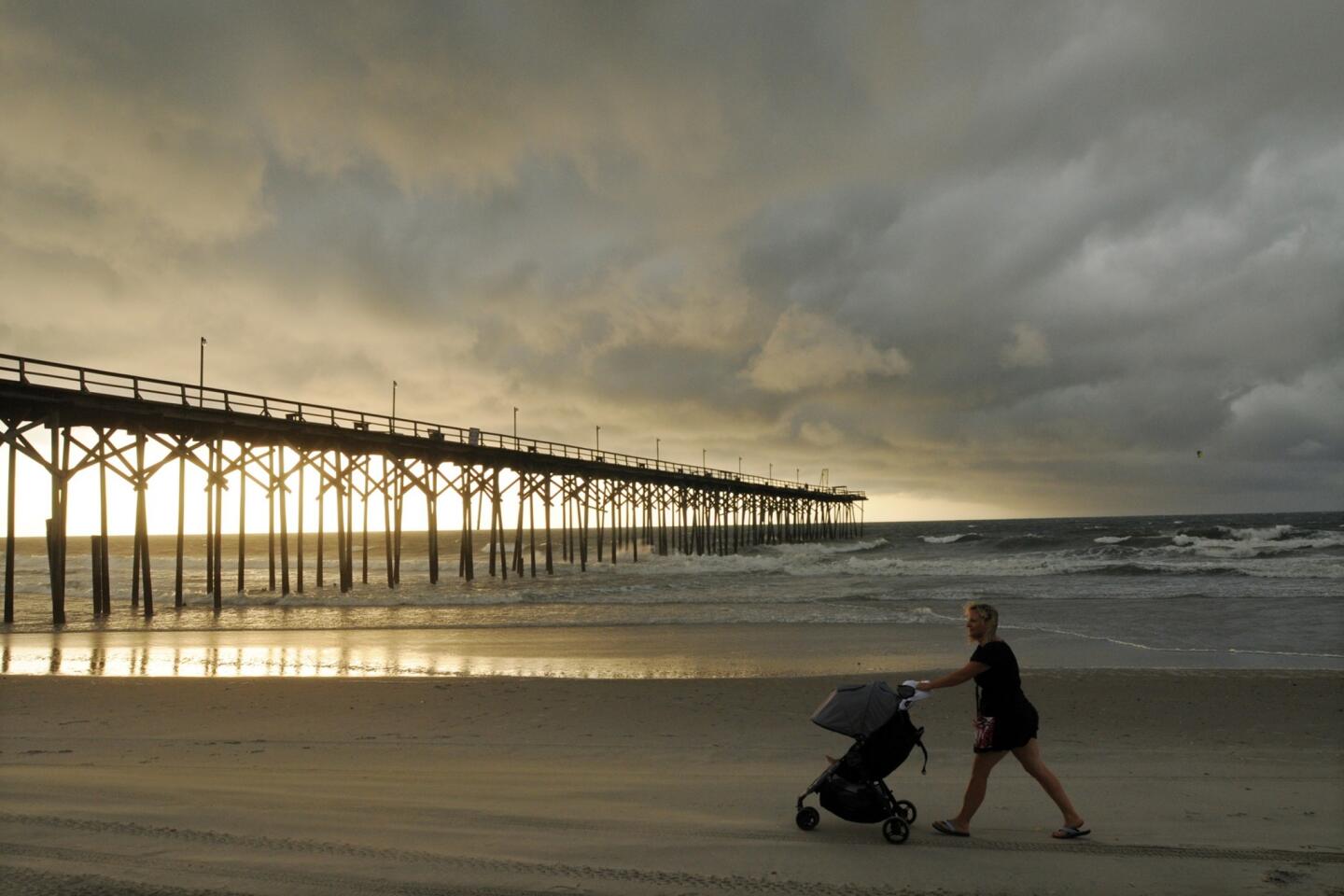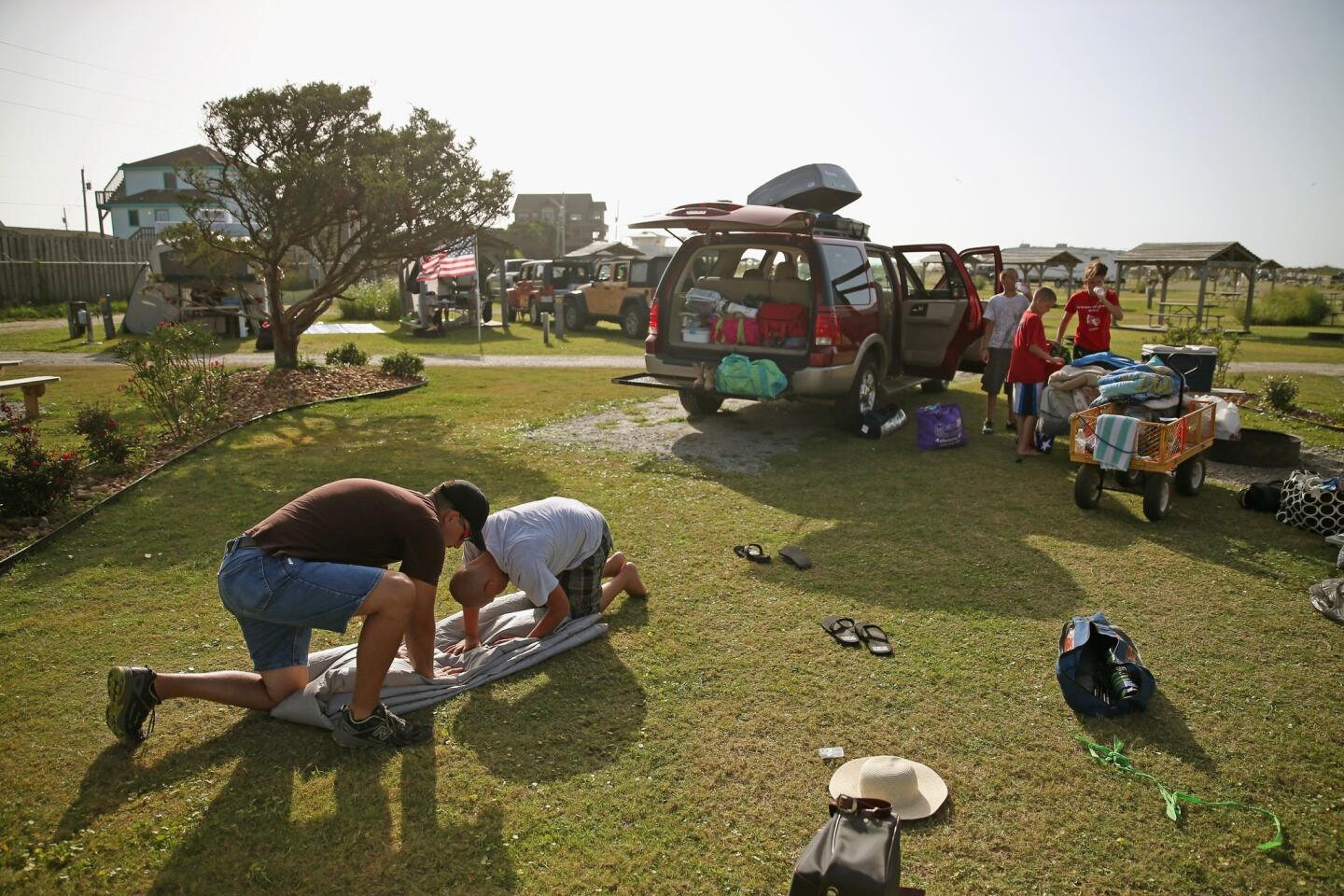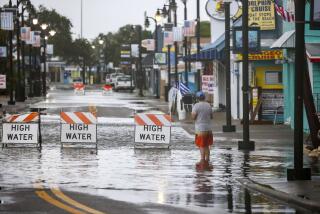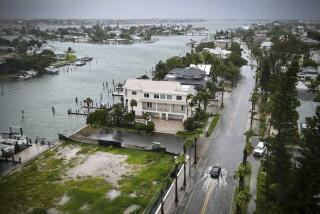Hurricane Arthur is expected to kick up rip currents along East Coast
Unlike violent, crashing waves, you probably won’t notice a rip current until you’re right in the middle of one.
Fourth of July beachgoers on the East Coast will need to take extra precautions to avoid these strong, narrow currents, courtesy of Hurricane Arthur, according to the National Weather Service and the U.S. Coast Guard.
Rip currents are channeled currents of water flowing away from shore, according to the National Oceanic and Atmospheric Administration (NOAA). They typically form at low spots or breaks in sandbars. The pull of rip currents varies — smaller ones may extend just beyond the line of breaking waves, but the more powerful ones can carry a swimmer hundreds or yards offshore, NOAA says.
“This is the first hurricane of the season so everybody needs to really careful,” Charles McLeod, a Coast Guard spokesman, told the Los Angeles Times. “People don’t need to be on the shore. They need to be further inland with their TV.”
Arthur developed from a tropical storm into a Category 1 hurricane Thursday morning, with maximum sustained winds of 90 mph. The storm is not expected to make landfall til early Friday, but the weather service warned of heavy rains, coastal flooding, high winds and a storm surge of 2 feet to 4 feet.
McLeod said the Coast Guard expected the waters off the Carolinas north to Virginia Beach, Va., to be especially dangerous.
Steve Pfaff, warning coordination meteorologist at the National Weather Service in North Carolina, said Arthur was expected to leave rough waters and rip currents in its path Friday, although the water should calm by the weekend.
Pfaff said a rip current was like a treadmill in the water. The danger is getting tired from fighting it and getting pulled under.
“When the water is rough, we don’t even advise getting in the water — you could get a spinal injury,” he said.
For those who are going to the shore, there are several things you should do Friday to keep safe, Pfaff said:
—Check the weather before heading to the beach.
—Never swim alone.
—Before getting in the water ask the lifeguard to point out rip currents, if there are any.
—Stay calm and don’t fight the current if you get caught in one.
—Escape the current by swimming parallel to the shoreline. When you’re free of the current, swim toward shore.
—If you’re too tired to swim, float or tread water until the current weakens, then swim to shore.
Follow @msrikris for the latest national news.
More to Read
Sign up for Essential California
The most important California stories and recommendations in your inbox every morning.
You may occasionally receive promotional content from the Los Angeles Times.

